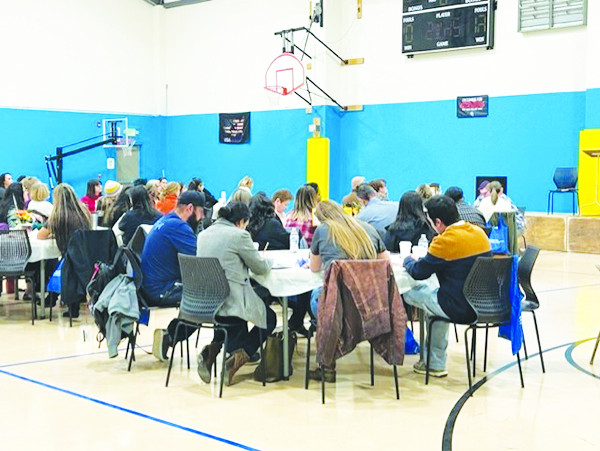SLV groups look to help fight scarcity of childcare

ALAMOSA – Last week, a group of 80 attendees representing a broad coalition of individuals and organizations from across the valley gathered together at the Boys and Girls Club to focus on the very heart of the community: the youngest children of the San Luis Valley.
The event, titled “Weaving Together Community, Peace by Piece,” was organized as part of a partnership between the SLV Early Childhood Council, the Boys and Girls Club of the SLV, the SLV Interagency Oversight Group and the Rocky Mountain Prevention Research Center.
The goal was as global as the diversity of participants and attendees would suggest — “to bring awareness to early childhood and those who have a part in it and to strengthen the roles we each have in the health and wellbeing of our youngest community members by increasing collaboration, understanding, and awareness.”
Marlayna Martinez, organizer of the event and the San Luis Valley Community Research Liaison with the Colorado Clinical and Translational Sciences Institute, says this is a crucial time in early childhood for a multitude of reasons.
“The state of Colorado has a new Department of Early Childhood in which many changes are being made with lots of unknowns and potential opportunities,” she said.
She cites universal preschool funding appropriated by HB-22 and changes in Colorado Pre-School Program funding as two of the major upcoming changes.
Other factors add to the need to focus increased attention on situations impacting children in their first years of life.
According to Martinez, the demand for childcare for children birth to age five continues to increase but the availability, access, and the number of qualified staff lags behind.
“Many families in the SLV are challenged with finding available childcare and many early childhood centers and preschools are struggling to keep their doors open.,” she said.
That struggle, she said, stems from issues related to staffing, compounded by “incredibly high” burnout among early childhood staff as a result of the fallout from COVID-19.
During the pandemic, essential workers were required to continue working to guarantee the safety and ongoing support of communities, but those individuals often faced uncertainty in assuring childcare for their own children.
Now, two years after communities were locked down, staff at childcare centers are beginning to see the impact on infants and toddlers who had limited social interaction during the most crucial years of their development.
“Many challenging behaviors and delays in social emotional competence are being seen,” Martinez said.
Those first years of life are absolutely integral to development in the months and years that follow.
“If the behaviors and delays are not addressed at an early age, it becomes increasingly harder to manage or foster change later on in life,” she said.
And while the pandemic may be described, at a national level, as officially “over,” the ramifications of that pandemic are not.
According to Martinez, the isolation that was necessary to stem transmission of the highly contagious COVID-19 resulted in children not being exposed to “good and bad germs” that help to build immunity to other viruses that typically circulate when communities are open and interactive.
These viruses — such as Respiratory Syncytial Virus, influenza and others — are now “coming with a vengeance,” keeping children and staff in and out of classrooms and many childhood centers being required to close classroom doors to slow further transmission and infection.
Taken individually, each one of these challenges is significant. But, taken as a whole with multiple challenges presenting themselves simultaneously, Martinez and others present at last week’s event argue that there is no more important time to focus on fostering the well-being of children in their early childhood years than now.
Concurrently and in response to this pressing need, there is also no more important time to raise public awareness of the need for, as Martinez puts it, a “well-supported and strong workforce and partners” — not just for children in their early formative years but for all in the community who will interact with these children as they grow.
At its core, last week’s event was created to foster partnerships, mutual trust and collaboration among those organizations that, as part of their operations, interact with issues related to children.
An example of what that collaboration would look like in real-time? “Mental health consultants and coaches from the Early Childhood Council should be aware and in a strong relationship with caseworkers at the Department of Human Services or SLV Boards of Cooperative Educational Services to truly understand the support and wraparound care that exists for children and families.”
At the very foundation, she adds, we should all have at least awareness and understanding of the opportunities available for children and families so that, when necessary, we can all advocate across sectors for different programs, supports, or resources.
“Strong community support starts with strong support for our caretakers of our youngest community members,” she says.
Far from summarizing the event, Martinez’s statement suggests last week’s event is just the beginning of a crucial conversation that, for the good of today’s youngest children and the community at large, can no longer be delayed.



